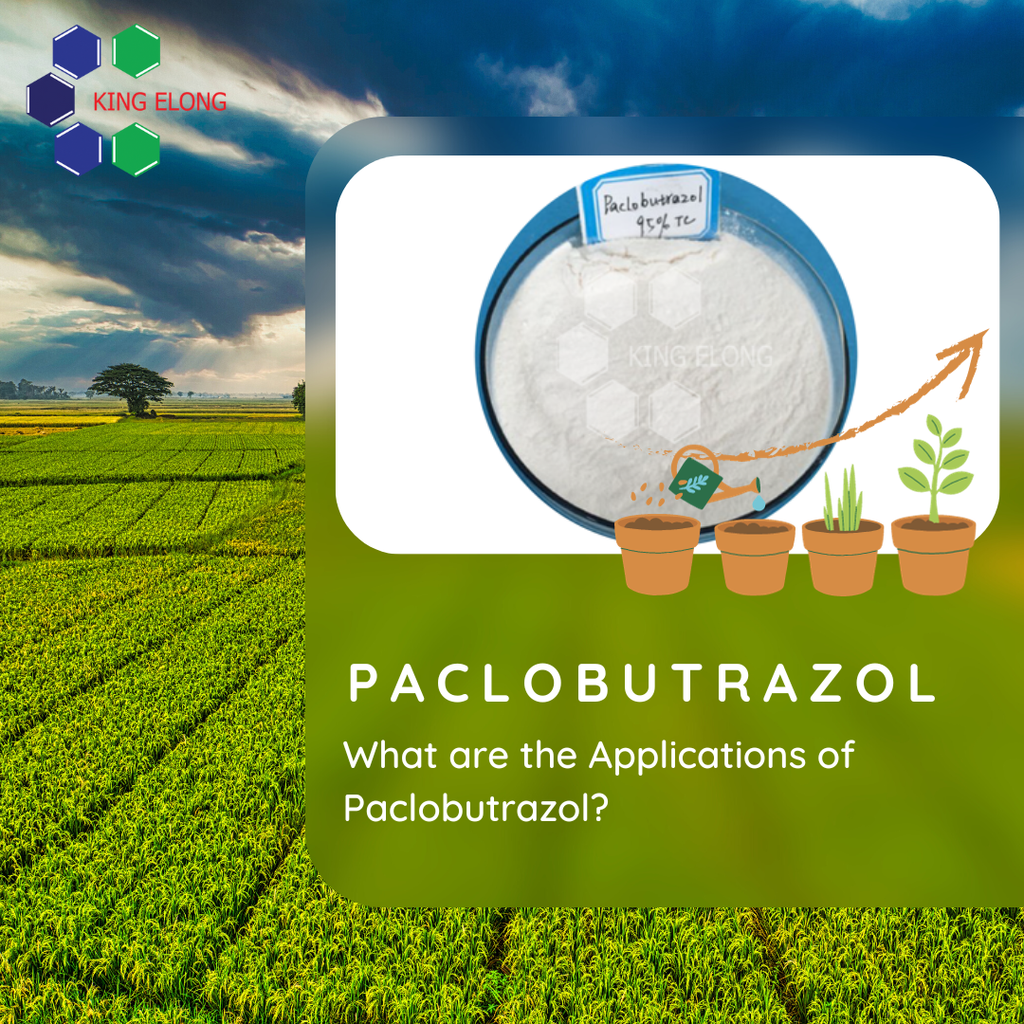1) WHAT IS PACLOBUTRAZOL?
It is a chemical compound consisting of a triazole ring and a benzene-chloro ring linking to an open carbon chain, used to regulate growth in plants by inhibiting gibberellin synthesis.
2) USES OF PACLOBUTRAZOL
Paclobutrazol is effective on most types of plants; however, it depends on the type of plant and the level of growth of the plant, to choose the suitable dosage.
Paclobutrazol has the effect of accelerating the flower formation process, increasing the ability to set fruit, slowing down the growth process of the plant (internodes are shortened), stimulating the production of proteins that thicken leaves and thicken the wax layer on the leaf surface. Therefore, it can help protect leaves to better resist fungal diseases, and resist plant stress. PBZ treatment also contributes to delaying the aging process of plants by reducing ethylene, increasing resistance to adverse conditions such as cold, drought, salinity..., enhances cytokinin and chlorophyll synthesis, and prevents chlorophyll degeneration in leaves.
Specifically, in rice, Paclobutrazol 15WP is often used in the 30-40 day period (branching stage) to help the rice firmly form branches, bloom bushes, stiffen plants, and prevent falling. In mango, Paclobutrazol is used to make off-season flowers.
However, using an overdose of Paclobutrazol will lead to unwanted consequences such as growth restriction, shortening the stem internode length while the stem diameter increases rapidly, causing stem cracking, flowers which are too small defect, the bud variation is too much but the bud size is too short, and the leaves are small and thick. Durian trees treated with Paclobutrazol in the off-season have shorter fruit stalks than those in the main season.
3) HOW PACLOBUTRAZOL WORKS WHEN IT ENTERS PLANTS
The mechanism of action of PBZ is to inhibit growth by reducing the synthesis of gibberellin but increasing the synthesis of abscisic acid (ABA), thus having an anti-stress effect on plants. Studies have shown that continuous administration of PBZ can help maintain higher endogenous ABA levels and prolong anti-stress effects.
According to studies, PBZ is absorbed and transported through the xylem rather than the sieve, so when spraying PBZ underground, it will be more effective than when spraying on leaves. Because of its long duration and long-term harmful effects, PBZ is recommended for foliar spraying.
4) PACLOBUTRAZOL DETOXIFICATION
Currently, to detoxify Paclobutrazol, the growth regulator gibberellin is often used to spray onto plants, helping to increase growth and lengthen stem internodes.
👉Use the antidote paclobutrazol with the main ingredients phosphorus and trace elements of Zn, Boron... to stimulate plant growth.
👉Use foliar and rooting fertilizers such as humic fertilizers
👉Add lime to improve soil pH
👉Add manure and organic fertilizer to help loosen the soil
👉Apply microbial fertilizer to increase paclobutrazol-degrading microorganisms in the soil


